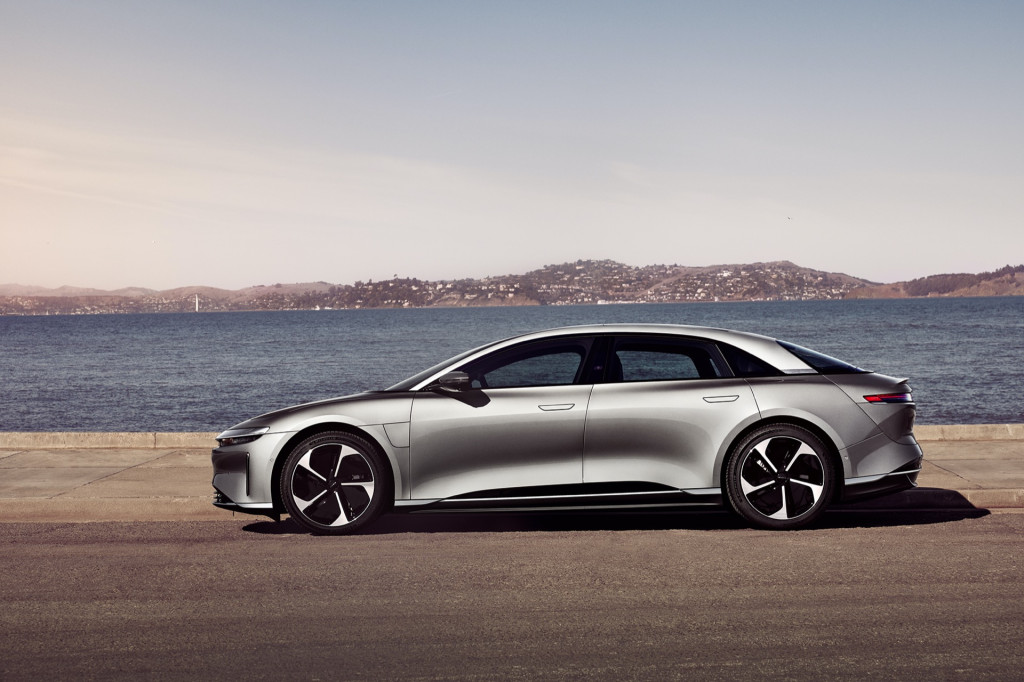The real-world range of EVs can vary a lot at highway speeds, Consumer Reports found in a recent test.
The publication tested 22 EVs from multiple automakers at a constant speed of 70 mph to simulate highway driving conditions. While some cars exceeded their EPA-rated ranges, one by more than 70 miles, nearly half fell short.
A Ford F-150 Lightning Lariat Extended Range ran out of charge 50 miles short of its EPA range rating, while a Lucid Air Touring and Tesla Model S Long Range missed the mark by 40 miles and 39 miles, respectively.

2023 Lucid Air Touring
EVs from Audi, Genesis, Hyundai, Kia, Lexus, Nissan, Subaru, and Volkswagen were all within 20 miles of their EPA ranges, Consumer Reports noted, with some exceeding those ratings (Genesis GV60, Hyundai Ioniq 5, Kia EV6, VW ID.4) and others coming up short (Audi Q4 E-Tron, Genesis Electrified GV70, Hyundai Ioniq 6, Kia Niro EV, Lexus RZ, Nissan Ariya, Subaru Solterra).
Meanwhile, a dual-motor all-wheel-drive Mercedes-Benz EQE 350 4Matic sedan exceeded its EPA range by 72 miles, while a larger EQS 580 4Matic sedan beat its EPA range by 40 miles. A BMW i4 M50 and iX xDrive50 surpassed their range ratings by 47 miles and 46 miles, respectively. A Ford Mustang Mach-E and Rivian R1T also topped their EPA ranges by a significant margin.
Consumer Reports also found that some EVs behave quite differently when they reach zero indicated range, Most stopped shortly after reaching zero, but the BMW iX traveled an additional 30 miles.

2023 Mercedes-Benz EQE
The disparity in real-world highway range is likely down to the EPA's testing methodology. Cars with combustion engines are separately rated in both city and highway driving cycles, but EV range ratings reflect a combination of those cycles—and truly, a different test procedure. That range rating isn't a highway number and, as Consumer Reports notes, EVs tend to be less efficient in highway than city driving—the reverse of gasoline cars.
This should also serve as a reminder that a number of factors can affect real-world EV range. As Green Car Reports has found in the past, even the wind direction can have a huge impact on range, and extreme cold presents its own harsh realities for winter range.
A similar test for cold-weather range would also likely yield a different set of winners and losers. The Audi Q8 E-Tron recently emerged on top in a Recurrent roundup of real-world range in such conditions.
It's likely better to consider how much real-world range drivers need than pushing for ever-higher EPA numbers. Many polls and surveys have suggested that 300 miles is the number to convince shoppers to make the jump—and in the past year, many such 300-mile models have arrived.












